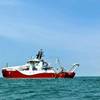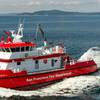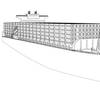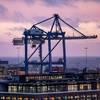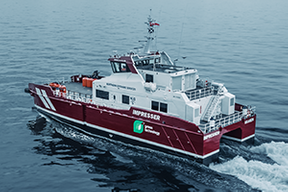New Icebreaking Cruise Ship Design Unveiled
Naval architecture and marine engineering firm Knud E. Hansen has introduced a new 144-meter-long icebreaking expedition cruise vessel design with accommodations for up to 300 passengers in 150 cabins.
Designed to achieve a service speed of 17 knots in open water, and with the ability to operate in solid multi-year ice of 1.8m thickness, the vessel has diesel electric propulsion, and two azipod-units, each 7.5 MW. The six generators have a combined power of approximately 23 MW and are fueled by a combination of marine diesel oil (MDO), and natural gas (LNG). There are two tunnel thrusters, each abt. 1,500 KW, located at the bow, which combined with the twin screw arrangement, provide a high degree of maneuverability. There is also a large lithium-ion battery bank to power the vessel while dockside, resulting in no port emissions. The vessel has a range of 8,100 nautical miles in open water.
The vessel features a layout with public spaces including a bar/lounge, multipurpose lounge, library, gift shop, observation lounge, fitness room/spa including a panorama ice bar, as well as a pool and jogging area. The vessel also features a large tender garage for stowing zodiacs and other expedition equipment that can be easily launched through a shell door on the port side. The vessel features a large helicopter deck aft where the helicopter can be lowered to the hangar on the deck below. There are two service lifts and three passenger lifts providing access to all accommodation decks. The vessel also includes a dedicate cargo hold with overhead hatch and davit system for stowing and deploying special, expeditionary cargo in remote locations along the cruise.
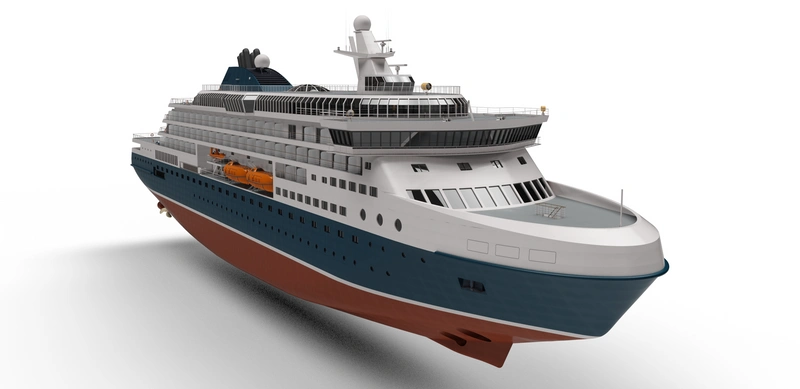 (Image: Knud E. Hansen)
(Image: Knud E. Hansen)
The majority of passenger cabins have private balconies with ocean views. The passenger cabins feature the Knud E. Hansen ‘Flex Cabin System’, which allows for cabin walls to be easily reconfigured between sailings to convert a single, luxury suite into two separate cabins.
The vessel is fully SOLAS compliant, with strict adherence to Safe Return to Port (SRtP) requirements through the inclusion of redundant, segregated power and propulsion systems as well as passenger safe havens and an auxiliary wheelhouse. Special attention has been observed with regards to the MarPol regulations as well as the Polar code, the designer said.
 (Image: Knud E. Hansen)
(Image: Knud E. Hansen)
Length o.a: 144.2 m
Length pp: 127.6 m
Breadth molded: 22 m
Depth moulded to deck: 39.2 m
Design draught: 7 m
Deadweight: 1,965 t
Ice class: PC3
Max number of passengers: 300
Number of crew: 150
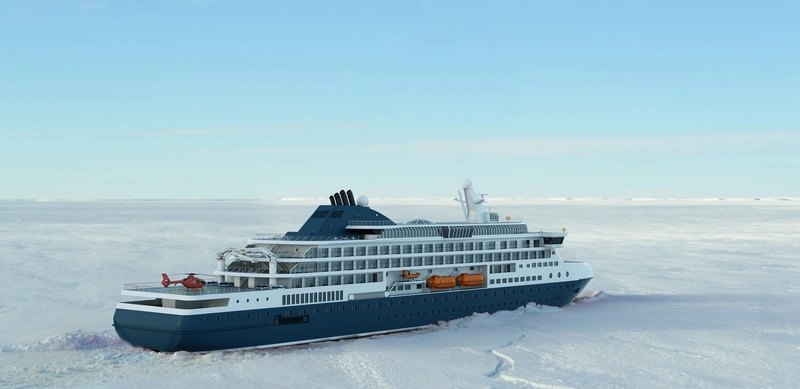 (Image: Knud E. Hansen)
(Image: Knud E. Hansen)




